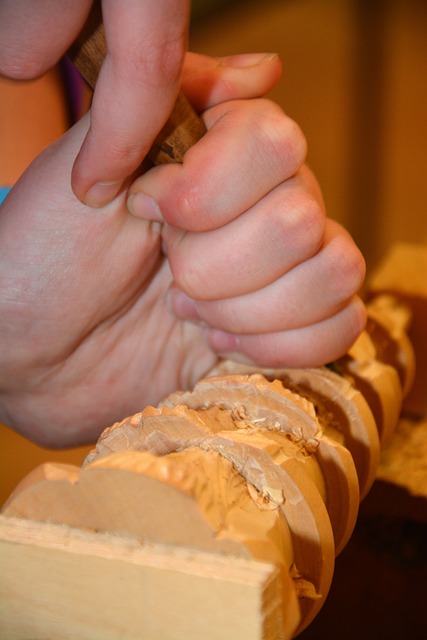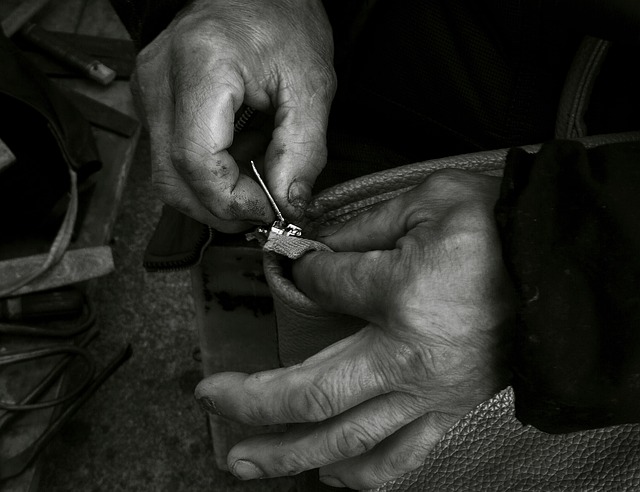Carpenters specializing in traditional joinery techniques play a crucial role in maintaining and restoring historic buildings, ensuring their wooden elements endure. Their expertise allows them to differentiate between natural aging and decay, performing necessary repairs that uphold the original craftsmanship without introducing modern alterations. These artisans adhere to conservation principles, carefully selecting authentic materials for seamless integration with the existing structure. Their work not only preserves the building's structural integrity but also its cultural significance and historical character. By employing both traditional methods and advanced technologies, skilled carpenters can detect and address issues like decay or pest damage, ensuring the longevity of these architectural treasures while maintaining their aesthetic appeal. The precision and respectful approach of these professionals help to pass on the stories and heritage embedded within older buildings for future generations to appreciate and enjoy.
Older buildings, with their weathered wooden elements, stand as testaments to history and craftsmanship. This article delves into the intricate process of preserving these architectural gems through meticulous repair and restoration efforts. It highlights the indispensable role of skilled carpenters in maintaining the integrity of historic buildings, the importance of matching new wood to existing features for authenticity, and the delicate balance required when managing moisture to prevent future decay. From assessing damage to applying the right coatings, each step is crucial in ensuring the longevity and functionality of these structures. This exploration also considers the legal and ethical implications, community involvement, long-term maintenance strategies, and the environmental impact of restoration work. Join us as we navigate through this rich tapestry of tradition and innovation, guided by the steady hand of the carpenter.
- Understanding the Significance of Wooden Elements in Historic Buildings
- The Role of a Skilled Carpenter in Preservation Projects
- Assessing Damage: Identifying Issues with Wooden Structures
Understanding the Significance of Wooden Elements in Historic Buildings

When examining the integrity and character of historic buildings, the wooden elements often serve as a chronicle of craftsmanship and design that reflects the era in which they were constructed. These components are not merely structural; they embody the narrative of the building’s history and the skill set of the artisans who contributed to its construction. A seasoned carpenter with expertise in traditional joinery methods is key to preserving these wooden features. Their role involves a deep understanding of the materials, the ability to discern subtle differences between decay and natural aging, and the knowledge to restore or reinforce without compromising the authenticity of the original workmanship.
The importance of employing a carpenter skilled in heritage conservation cannot be overstated. Such craftspeople possess the necessary skills to identify appropriate restoration techniques that align with the building’s historical significance. They work diligently to repair or replace elements, ensuring that their interventions are respectful of the building’s original design and construction methods. This meticulous approach not only maintains the structural integrity of the wooden features but also preserves the cultural heritage encapsulated within these historic structures for future generations. The carpenter’s handiwork serves as a tangible link to the past, bridging time with an unwavering commitment to tradition and excellence in craftsmanship.
The Role of a Skilled Carpenter in Preservation Projects

When embarking on preservation projects for older buildings, the expertise of a skilled carpenter is invaluable. These artisans possess a deep understanding of traditional joinery and woodworking techniques that are essential for maintaining the integrity of historical structures. Their role extends beyond mere repair; it encompasses the careful restoration of wooden elements to their original state, ensuring the building’s character and craftsmanship are preserved for future generations. A carpenter’s ability to source authentic materials and match existing finishes allows for seamless integration, making repairs virtually indistinguishable from the original construction.
The commitment of a skilled carpenter to preserving heritage is evident in their meticulous approach to each project. They assess the condition of wooden components, such as beams, doors, and windows, to determine the most appropriate restoration methods. Their proficiency with both hand and power tools enables them to execute repairs with precision and care. Furthermore, their knowledge of wood types, aging patterns, and environmental factors affecting wood ensures that the restorations not only enhance the building’s structural stability but also respect its historical context. This dedication to craftsmanship is crucial for safeguarding the legacy of older buildings and the stories they hold within their wooden frames.
Assessing Damage: Identifying Issues with Wooden Structures

When a building’s wooden elements show signs of age, it is imperative to conduct a thorough assessment to determine the extent of damage and necessary repairs or restorations. A skilled carpenter plays a pivotal role in this process, meticulously examining the structural integrity of timber components, from support beams to window frames. Their expertise is crucial in identifying hidden decay, cracks, or other forms of deterioration that may compromise the safety and longevity of the structure. Utilizing a combination of visual inspection, probing, and sometimes advanced diagnostic tools like moisture meters or infrared cameras, these professionals can pinpoint issues that are not immediately apparent. This detailed analysis enables building owners to make informed decisions about the type of work required—whether it’s a straightforward repair or a more comprehensive restoration effort. The carpenter’s careful evaluation is vital in preserving the historical character and structural soundness of older buildings, ensuring they remain safe and beautiful for future generations. In instances where wood has been compromised by pests, rot, or environmental factors, the carpenter’s skilled hands are essential in executing precise repairs that maintain the integrity of the original craftsmanship. Their ability to match existing materials and techniques is key to harmonizing new work with the building’s age, maintaining its historical value while ensuring its continued safety and functionality.
In closing, the wooden elements of older buildings are not merely structural components but embody the craftsmanship and history that define our cultural heritage. The expertise of skilled carpenters is pivotal in ensuring these irreplaceable pieces of architecture endure for generations to come. Through diligent assessment and meticulous restoration, such artisans safeguard the integrity of historic edifices. Their work serves as a testament to the durability and beauty of wood, maintaining its role in our built environment. As we appreciate the intricate details and craftsmanship found within these venerable structures, it becomes clear that preserving them is not just about maintaining buildings but safeguarding a piece of our collective story.



